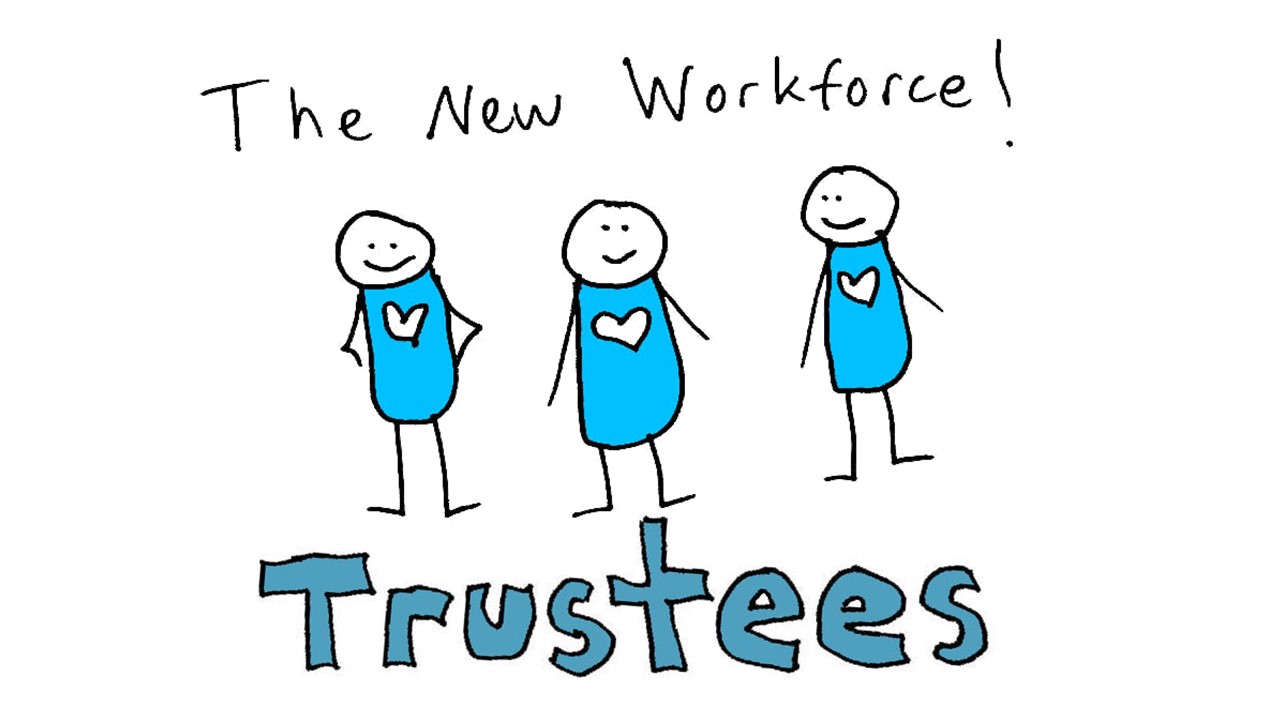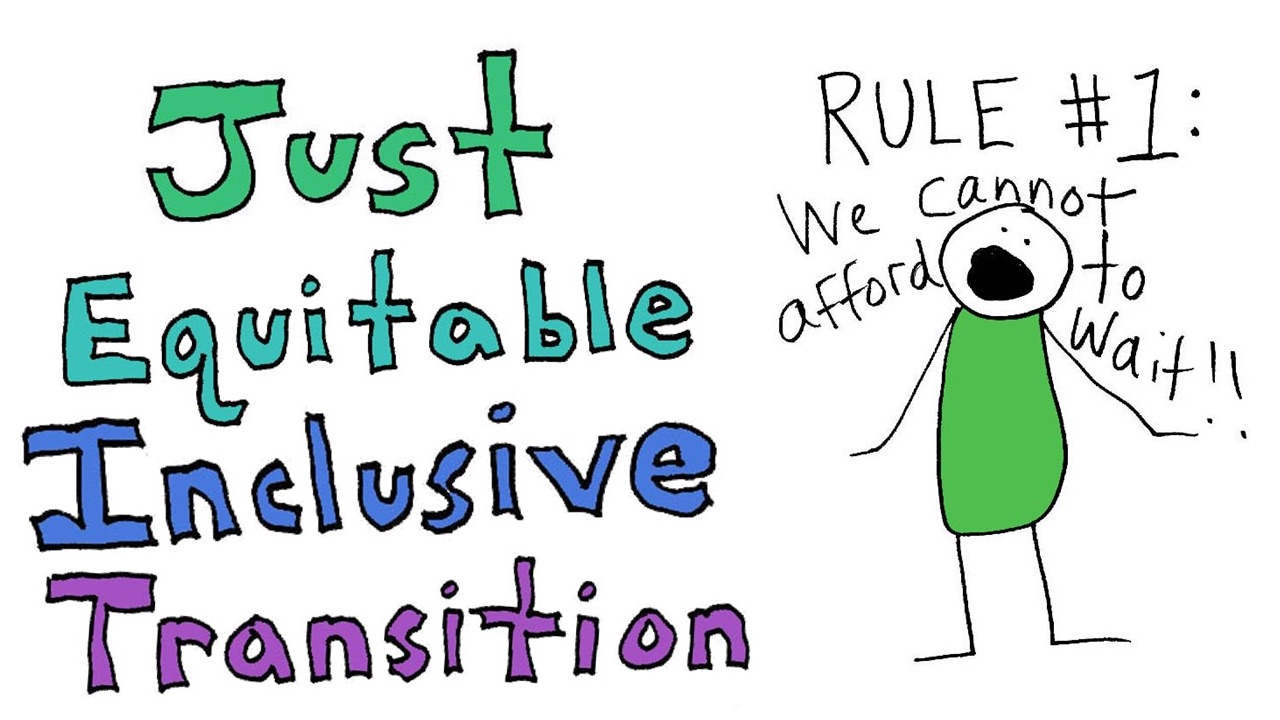
Building a Just Transition Now
cross-posted from P2P Foundation blog
Step 1. Start now
Don’t wait. That’s rule #1 for living in a world where we’re already feeling the impacts of climate change; millions of lives and livelihoods are at risk — or stand to benefit from solutions — in this and future decades. We needed a just transition of our energy economy yesterday. And while there are challenges to universal access and equitably shared benefits from clean energy, there are steps we can take today to start building projects, jobs, and improved health in local communities.
Step 2. Appreciate the puzzle, and don’t let barriers stop you
As we described in our Community Energy Puzzle post, community-owned renewable energy has the potential to expand opportunities for ordinary citizens to put their money toward community-controlled energy facilities so neighbors can share in both electricity and the economic, social, and health benefits of clean energy. However, because our current legal system favors the wealthiest sectors of society, it’s not legal in most states to share electricity from solar panels with your neighbors, and it’s almost impossible for renters, nonprofits, or cooperatives to benefit from the tax incentives that exist to promote solar and wind energy projects.
Our team has spent two years mapping the legal landscape of community-owned energy, and we have not found a community-owned energy model in the U.S. that appears to be scalable. Existing successful projects provide much to learn from, but also benefit from unique regulatory environments, financing opportunities, the wealth of higher income communities, or institutional support that may not be available to most communities. Further, we’ve uncovered legal barriers in the realms of securities, tax, and utilities regulation. Combined, those barriers prevent ordinary people from 1) putting money into, 2) receiving tax benefits from, and 3) directly purchasing energy from their own renewable energy projects. From this exploration, we hatched an idea: the Permanent Community Energy Cooperative.

Step 3. Build today and plan for tomorrow
Based on our research of existing models and legal barriers, we’ve come up with an energy development and ownership model called the Permanent Community Energy Cooperative (PCEC), a scalable model that gives communities permanent access to and control over their power.
The model’s key innovation is to leverage existing, but little-known, collective finance mechanisms for cooperative entities. Initially, PCECs will be more like energy investment cooperatives than consumer cooperatives. Until laws change, members may not be able to receive energy directly from the cooperative, so the PCEC will have a built-in and legally enforceable adaptation mechanism to enable members to receive energy when regulations make it viable. Meanwhile, as described below, a PCEC can drive energy development by meeting other essential needs for members: 1) money, 2) community, 3) good jobs, and 4) a just, sustainable, and secure future.
1. Divestment and Investment Opportunities:
The PCEC provides a rare opportunity for low- to moderate-income people to invest in their local community and earn a modest return. In 2015, our team drafted and passed a California bill that essentially legalizes equity crowdfunding for cooperatives. We believe the growing movement to divest from fossil fuels will drive community capital toward PCECs. By harnessing the consumer and investor dollars of ordinary people, we believe we can overcome barriers to community-owned energy, activate a demand-driven market transformation nationwide, and accelerate a just transition to renewable energy.
2. Decentralized Community-Building:
The model is designed to fuel project development by harnessing existing social connections and communities of interest. As with traditional “barn raising” and fraternal insurance societies, this strategy is tried and true. Food, drink, music, sports, and other social activities are built into the practical management of common resources around the world. In the energy context, pairing renewable development with social activity lends cohesion and commitment to project development.
Relatedly, the model will rely on a decentralized organizational structure. Each PCEC is designed to scale rapidly, in part because the financing model depends on building a large membership base. A decentralized structure can retain the tight-knit quality of communities by supporting people to come together in small groups and build community around launching each energy project. Decentralized organizations represent both innovation in organizational design (see the book “Reinventing Organizations”) and yet another tried, true, and timeless structure for human activity.

3. A New Workforce:
A decentralized, democratic, and mission-driven organization requires a particular kind of workforce. Each PCEC employee will be a steward of the cooperative’s mission, tasked with nurturing community projects and managing technical and administrative logistics. Governance among staff will be relatively nonhierarchical to remove inefficiencies of bureaucracy, place each worker in a position of direct accountability to community groups, and tap fully into workers’ intrinsic drive to push projects forward. Since PCECs are designed to scale, a PCEC movement could rapidly create jobs and fulfill a craving for meaningful and sustainable work for tens of thousands of new workers and create a path to transition workers in the fossil fuel economy.
4. Building Movements Toward a Rapid and Just Renewables Transition:
If investing opportunities, community-building, and good job creation are not enough of a driver for member engagement, then a desire for equity and sustainability may seal the deal. A PCEC is a vehicle for building a broad-based movement, setting into motion widespread renewables development, and ensuring that the transition to renewables enables communities to own and control their power in the long run.

A PCEC can address many of the current barriers to community-owned energy:
| Barrier | PCEC Response |
| Sharing electricity is expensive or not legal | -First build projects on the property of local nonprofits, cooperatives, or businesses that can take advantage of existing net metering programs -Adapt to allow sharing when laws change |
| Nonprofit entities or low-moderate income customers are unable to benefit from the federal solar tax credit | -Reduce costs by scale of project or include tax equity partners in development and ensure complete cooperative ownership in the long term |
| Securities regulations limit crowdfunding options | -Crowdfund using cooperative memberships of between $50 – $1,000 |
| Renters and low-income individuals can’t participate | -Everyone can participate by investing in community energy via coop memberships, and by helping to spearhead project development -Adapt to allow renters and low-income customers to share electricity when laws change |

We believe the PCEC model represents a breakthrough and has great potential to be replicated by grassroots communities everywhere, particularly if we can demonstrate it with a successful pilot. A pilot can also catalyze policy change by demonstrating to lawmakers that current laws are preventing innovation and equitable development.
Permanent Community Energy Cooperatives are an opportunity to start healing the planet and communities today through equitable energy development. They’re also “fun-work” that can bring people together, create results to celebrate, and build stronger bonds for more resilient, thriving communities.
Go to the GEO front page


Add new comment